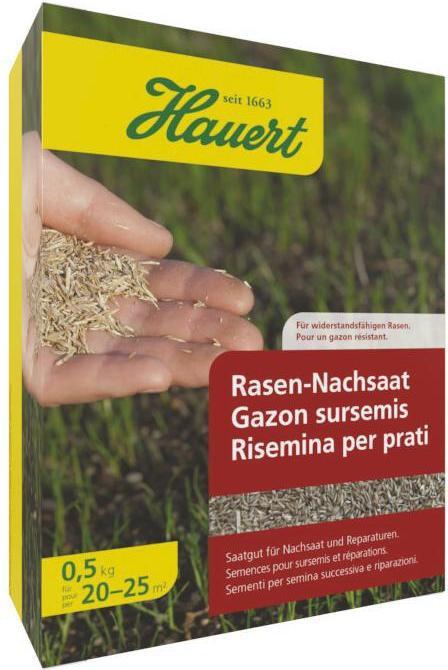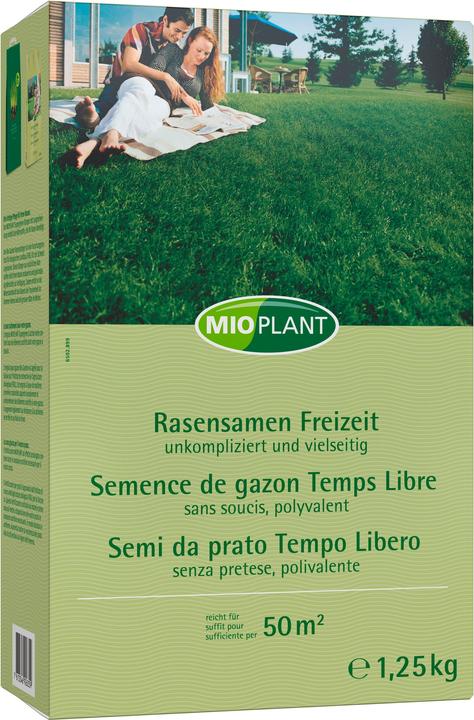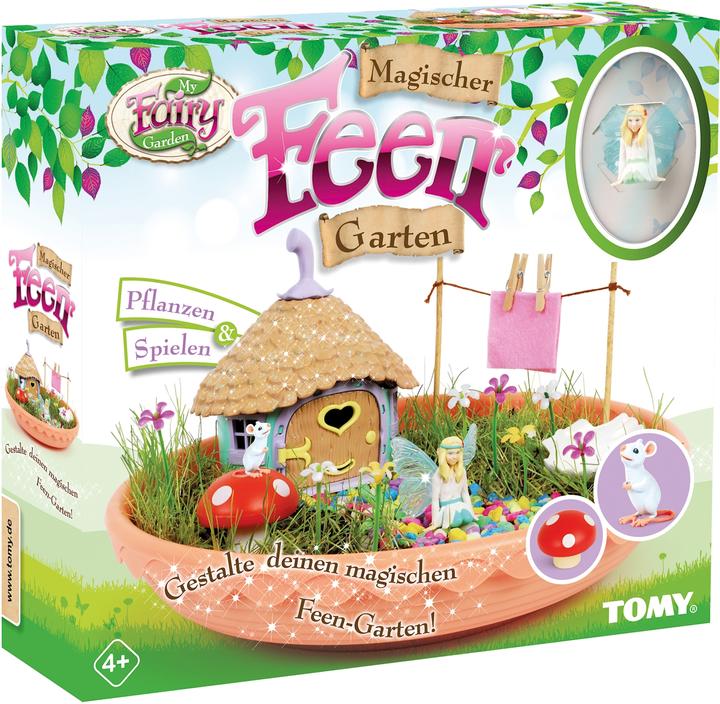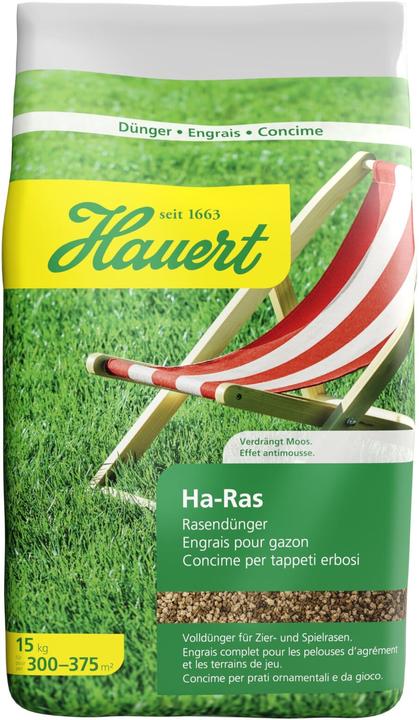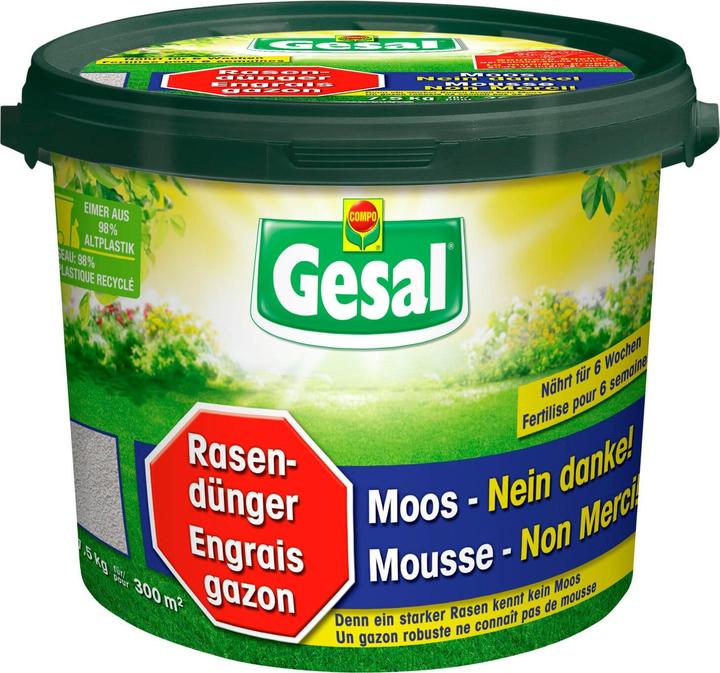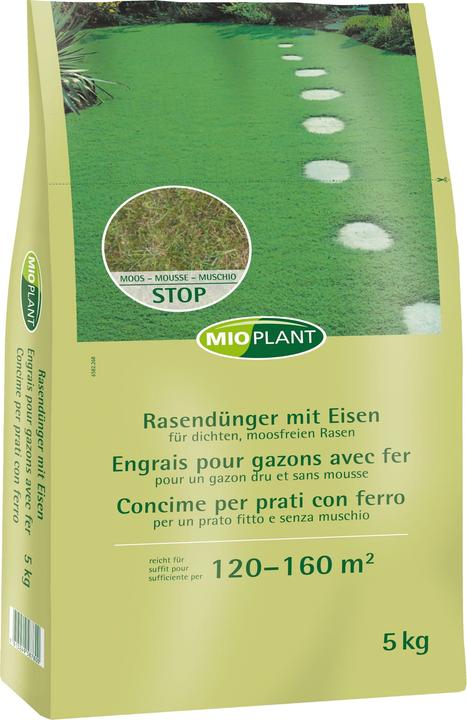

My years of struggle for a beautiful lawn were finally rewarded
My lawn and I: a long and, more than anything else, sad story. Or: how I managed to turn brown wasteland back into a lawn – but torched our community lawn in the process.
If I so much as utter the word «lawn» at home, my wife and both kids throw their hands in the air, roll their eyes, and start cursing. But I only ever had good intentions – for myself, my family and our lawn.
But let’s not get ahead of ourselves. My garden isn’t big. This has the advantage of keeping maintenance manageable. But the downside is, once you add a kid’s paddling pool and two sun loungers, there’s no more space. Then there’s the fact that the lawn slopes slightly at the back, making that part unusable.
Two years ago, I wanted to get rid of this issue, if nothing else, by raising the lawn at the back with additional soil. I had a farmer in the village deliver two cubic metres of the absolute finest humus soil. After everything was levelled out nicely, I spread lawn seed. My plan was that the lawn would grow enough to be ready for summer – especially for our paddling pool. The grass did indeed grow, albeit very slowly. But it didn’t really spark any joy. It was sparser than coaching legend Gilbert Gress’s hair. No sooner had I cut the grass again than brown soil was visible between individual clumps.

Source: Martin Rupf
It wasn’t my fault: the farmer gave me the wrong soil
At first, I didn’t think anything of it. The grass probably just needs a bit of time to flourish into dense, lush green. Summer came and then autumn and spring. But even the following spring, my lawn didn’t return to its old strength. Slowly it dawned on me that it might be because of the soil. A quick search online confirmed my fears. General advice is to choose soil that creates conditions for dry and well-aerated earth. Sandy loam is ideal, but you don’t want too much clay content otherwise you risk waterlogging. Evidently, my humus soil didn’t quite match up with the characteristic of ideal lawn soil.
So I phoned the farmer who had given me the wrong soil. I say wrong because I’d told him at the time what I intended to use it for. «Yeah, pure humus soil isn’t ideal for lawn seeding,» said the farmer, tersely. Why didn’t you tell me that before, was all I could think. Anyway, the farmer said I could help myself to another pile of soil free of charge – the right soil, mind you. He immediately lent me a petrol-powered plough – likely because of his guilty conscience.

Source: Martin Rupf
Recreating the battle for cultivation
My next steps were to remove some of the unsuitable humus soil, apply the new clayish soil and then mix it into the bottom layer with the plough. This must have been what it felt like in the 1940s during the battle for cultivation.

Source: Martin Rupf
After about an hour of ploughing, the soil, or rather field, is ready to be sown.

Source: Martin Rupf
Next up, I buy loads of lawn seeds from all sorts of brands and sow them.
Finally, I compact the ground. I do this by walking back and forth over the surface for just under half an hour with homemade wooden shoes. An image that my kids will probably still remember when they’re older.

Source: Martin Rupf
Maybe I need to mention at this point – to everyone’s complete amusement – that I did all this in mid-October. Not least because the weather forecast promised warm late autumn weather until the start of November.
By the way, my daughter proved that this hope wasn’t unfounded. Because she planted her magical fairy garden at exactly this time.
And it went really well. After just a few days, her little fairy garden was blooming with lush, green grass.

Source: Martin Rupf
Frosty weather and equally frosty relations with the neighbours
Meanwhile, my plans to get a nice lawn before winter set in went horribly awry. Because the lawn seeds didn’t want to sprout. And trying to protect the lawn seeds from the cold with a liner didn’t help (any more).

Windhager Garden fleece


Bellissa Weed Stop Fleece Comfort
The result being that we got to marvel at a brown area for the following four winter months.

Source: Martin Rupf
For a brief moment, I considered buying inexpensive turf (site in German), but I gave it a miss.
That’s probably also why my neighbours on both sides haven’t spoken to me in months. We live so close to each other that they also got to feast their eyes on brown farmland all winter. At least it snowed a bit for a few days so that the brown disappeared beneath a white blanket for a little while.
But the days were going by and from 21 December, they start to get longer. What was interesting was that even in the cold winter months, a sparse lawn grew. By mid-March, it was finally time for me to devote myself to my sacred lawn (project) again.

Source: Martin Rupf
Even just announcing I planned to get back into the lawn battle got my family all worked up. I promised that if it wasn’t in reasonable shape by the end of April, I’d call it a day. Then it’d either be a gravelled, or better still, I’d pour concrete over it and turn my front garden into a mini basketball court.
Silica sand: the super weapon for perfect the lawn base
To ensure my project succeeded at long last, I stocked up on kilogrammes of lawn seed and fertiliser.
I also ordered silica sand. You better believe I did my homework (site in German) on this, too. When you add sand, the lawn levels out, the soil structure improves and subsoil becomes healthier and less susceptible to disease. More specifically, it’s sand that makes the soil more permeable, with less fungal growth, less moss and a lawn that’s generally more robust.



VAR Quartz sand for waste collector with ashtray insert, 25 kg, supplied in carton.
However, it soon became apparent that I probably hadn’t ordered enough. For each square metre, you need between four and seven kilogrammes of silica sand. But anyway, I spread ten kilogrammes of sand.
For the time being, I’ve held off fertilising. Not even with my coffee grounds, which I stopped pouring down the drain a few months ago and started using as plant fertiliser.
As it is, coffee grounds are only partially suitable as lawn fertiliser. Worse still, when used incorrectly coffee grounds can do more harm than good (site in German).
Even frosty nights can’t bring me down any more
This time, it seemed to be working out well. My timing in particular turned out to be much more favourable than in autumn. Having said that, there were still two or three sub-zero temperature nights in March, so my lining got another outing.

Source: Martin Rupf
Even the fact that spring took an unusually long time to raise its head this year couldn’t hinder my ambitious «I’ll-have-a-lawn-by-end-of-April» project.
And sure enough, at the end of April, our little garden was almost completely green.

Source: Martin Rupf
I’m already looking forward to the first cut. And putting the paddling pool out on the lawn in summer. I mean yes, my eight- and ten-year-old are actually too old for this small paddling pool. But I’ve not exactly invested nigh on two years on a level lawn not to be able to make the most of it at least once.
Too much fertiliser: or how I left burnt soil in my wake again
All’s well that ends well, right? I don’t think so. It wouldn’t be on brand for me if I didn’t manage to mess up the supposed happy lawn ending yet again. So, what on earth happened? As I still haven’t been able to use the fertiliser I ordered for my lawn, I thought I’d do something nice for the community. So I spread 7.5 kilogrammes of fertiliser on our community lawn. As so often, I did it hastily and without taking the necessary time to read the instructions properly. All that to say, I didn’t distribute the fertiliser evenly over the freshly cut lawn – it was more pell-mell. But the main issue was that I used way too much fertiliser. I read that the amount would have been enough for 300 square metres, which is three times the size of our community lawn. But unfortunately I only discovered this after the fact.
The next day, my kids came home all in a dither. «Dad, what have you gone and done again!!??? The lawn is burned!» At first, I thought they were exaggerating, as kids are wont to do. But a quick look round revealed the full extent of the disaster. Large, black holes gaped in all the places I’d scattered fertiliser. Once again, I’d literally left scorched earth in my wake.

Source: Martin Rupf
But anyway, on the plus side, I’ve still got some lawn seed. It would’ve been too boring not having another lawn project on the go now that I’ve spruced up our private lawn.
Header image: Martin RupfHalf-Danish dad of two and third child of the family, mushroom picker, angler, dedicated public viewer and world champion of putting my foot in it.
